
Impacts of Altosid insect growth regulator on horn fly populations in Canada: Supplement intake and fecal residue concentrations of Methoprene
Lead Scientist – Dr. Obioha Durunna
Introduction
Duration – July 2 to Sept. 5, 2024
This study examined the effects of supplementing grazing cow-calf pairs and heifers in western Canada with Altosid IGR-infused mineral supplements, compared to standard mineral supplements. The goal was to generate practical, science-based data for Canadian beef producers deciding whether to use Altosid IGR as part of their fly control strategy.
Researchers specifically aimed to answer these questions:
Does feeding Altosid IGR reduce horn fly abundance in treated herds versus controls?
How does Altosid IGR supplementation affect overall mineral intake and cattle performance?
Are the concentrations of S-Methoprene (the active ingredient) in supplements and manure at levels known to disrupt horn fly life cycles?
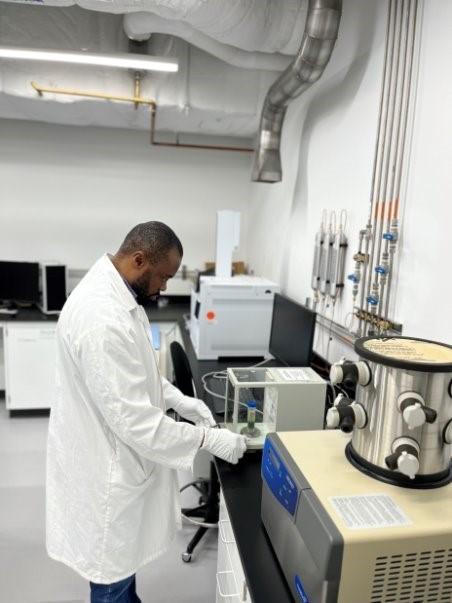
The active ingredient, S-Methoprene (SMP), an insect growth regulator (IGR), controls horn flies by disrupting their life cycle. It prevents the development of horn fly larvae into pupae and/or pupae into adults when ingested by cattle and passed through their manure. This disrupts the horn fly's life cycle, reducing the overall population of adult horn flies. According to the product label, the concentration of SMP 0.01 per cent in the supplement is about 100 ppm, but about 0.08 ppm in the dung pat, which should be an effective dose to prevent immature horn flies from developing.

The project is relevant to Canadian producers seeking reliable fly-control methods that maintain mineral consumption rates and do not negatively impact other beneficial insects like dung beetles. Additional objectives included ensuring that Altosid IGR did not reduce mineral intake or overall animal performance and validating that labelmandated concentrations of S-Methoprene in feed and feces were achieved.
Materials and Methods
Two sites in western Canada were used, one with a producer cooperator in Vermilion River County, Alta. and the second at the Manitoba Beef and Forage Initiatives, Brandon, Man. Two C-Lock® Smartfeed units were deployed to each location (one for control and treatment groups, respectively) to monitor individual supplement intake. The Vermilion, Alta. and Brandon, Man., sites had 50 cow-calf pairs and 30 replacement heifers, respectively. Each cow-calf pair or heifer was randomly assigned to either the Altosid IGR-infused group or the Control Group at each site.
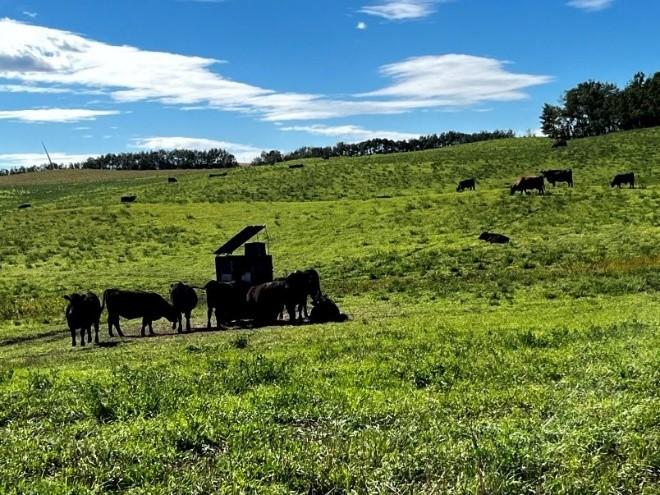
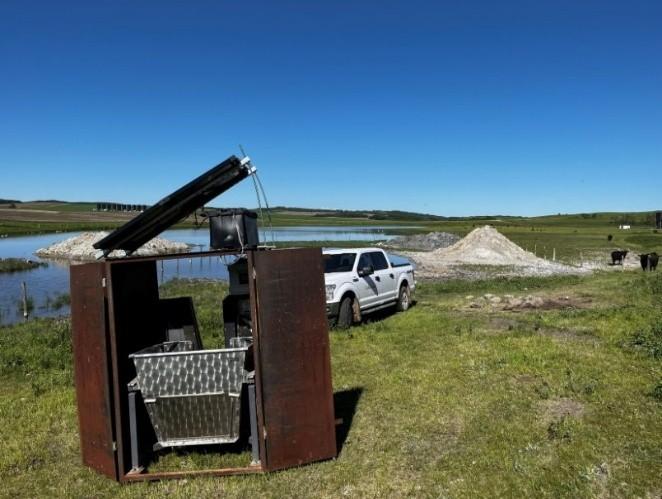
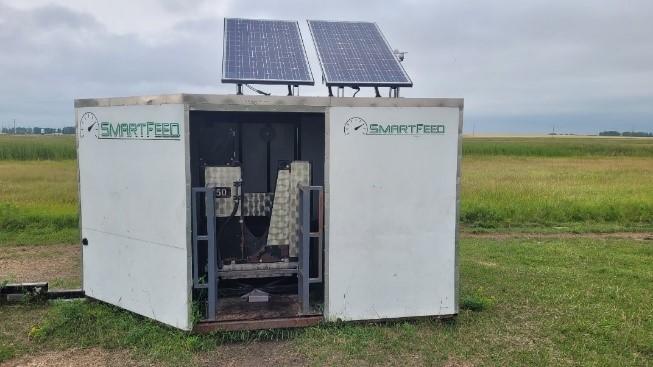
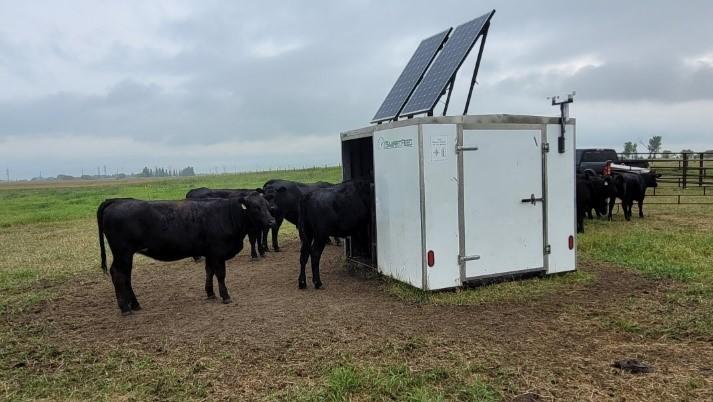

The separation between the treatment groups was critical to minimize the confounding effects of flies crisscrossing treated and untreated areas. There was about 11 to 13 km separation at the Vermilion site, and about 0.8 to 1 km separation at the Brandon site. All animals were provided ad libitum mineral access and monitored remotely.
All groups were weighed on the first two consecutive days at the beginning and end of the trial. Ultrasound scans for backfat and rumpfat thickness were collected from the cows. Baseline photos of cows were also collected.
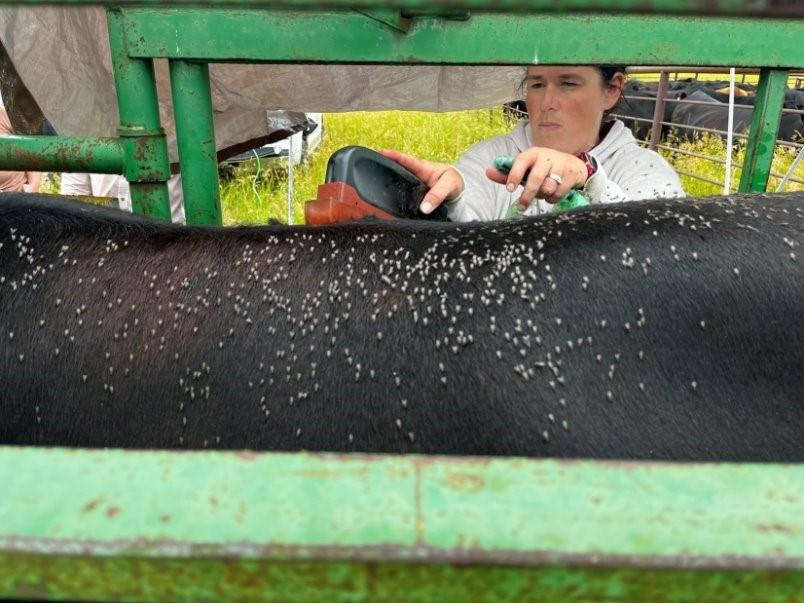
Ultrasound scans
At the end of the trial, fecal samples were collected (directly from the rectum) from all cows and heifers. The samples were frozen immediately until further processing.
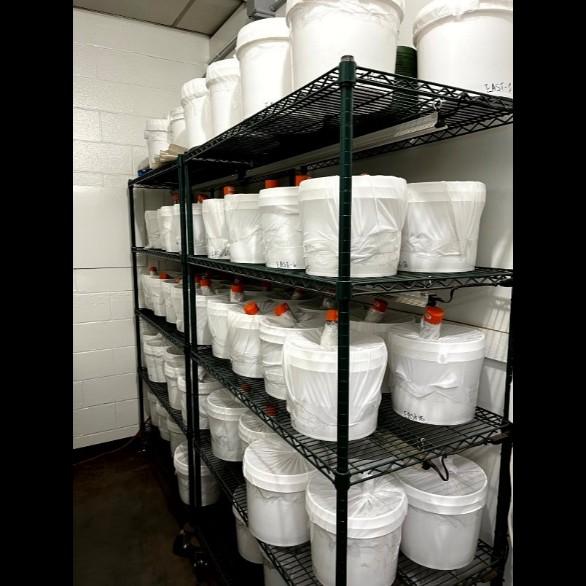
Each plated dung pat was placed in an 11L plastic pail covered with a mesh. The emergence of flies and other dung insects was monitored at weekly intervals. The statistical analyses evaluated differences in supplement intake, cow average daily gain, calf average daily gain, differences in backfat thickness, rumpfat thickness and ribeye area. Digital photos were collected from both sides of each cow to count the flies and determine fly abundance. The fly counts from the pictures were analyzed by the site following a generalized linear model that assumed a negative binomial distribution. The differences between treatment groups were analyzed by site.

Results and Discussion
Supplement Intake
Cattle receiving Altosid IGR consumed statistically significantly more mineral supplement than controls. The frequency of bunk visits was also higher for IGR groups.
Animal Performance
There was no significant difference in body condition gain (backfat, rumpfat, ribeye area) between groups.
Fly and Beneficial Insect Counts
Before treatment, there was some variation in fly emergence from dung, but posttreatment, fewer flies emerged from IGR-group manure.
Dung beetle emergence: After Altosid IGR supplementation, beetle numbers dropped in the treated group. However, species-level impacts were not assessed.
Field fly counts on animals showed little difference between treated and control groups at both sites, likely due to fly migration from untreated neighbouring herds.
S-Methoprene Analysis
Control group supplements and manure showed no S-Methoprene.
The SMP was not detected in the control supplements, but the Altosid IGR-infused supplements had an average of 19.03 ppm (range: 16.99 – 21.20 ppm). There was no SMP detected in the feces of the females in the control group. The Vermilion Altosid IGR group had average SMP concentrations of 0.16 ± 0.04 ppm in the feces, while the average SMP concentration in the Brandon Altosid IGR group was 0.19 ± 0.05 ppm.
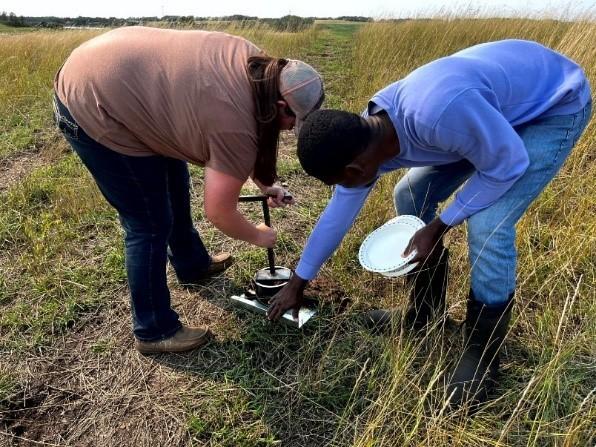
S-methoprene extraction

Conclusion
Altosid IGR mineral supplements can effectively disrupt fly emergence from manure without negatively affecting cattle mineral intake or body condition. While direct reductions in fly loads on cattle were hard to demonstrate (possibly due to fly movement from neighboring pastures), the active ingredient consistently reached targeted levels in both feed and dung.
For beef producers, these results suggest:
Altosid IGR-infused minerals do not discourage supplement intake and may meet expected consumption levels.
IGR supplements can be integrated into standard mineral programs without compromising cattle health or mineral delivery.
To maximize on-animal fly control, efforts should be made to reduce exposure to flies from untreated herds on adjacent land.
Further research is recommended in more isolated settings to clarify the onanimal fly reduction benefit. For now, Altosid IGR offers a feasible addition to fly management strategies focused on the cow-calf segment in western Canada.
